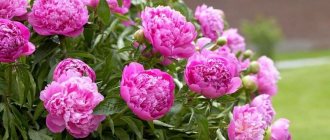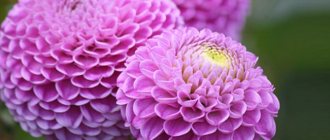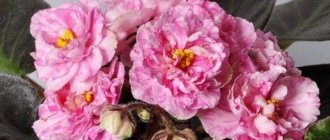There are types of bulbous crops that cannot winter in open ground in the northern regions and cities of central Russia.
They cannot tolerate frost, they freeze, and even if they survive the winter, it is impossible to wait for them to bloom in the spring. Most often, such plants are planted in winter, as soon as stable warm weather sets in outside. As a rule, this is the beginning and end of May.
Most of our popular garden bulbous flowers are not at all capricious, do not require complex care, and grow well in different soils.
The main thing is to plant it correctly. What is important:
- choice of location;
- soil preparation;
- healthy bulbs;
- correct planting depth;
- correct landing time.
The main requirements for planting bulbs of tulips, daffodils, snowdrops, hyacinths, muscari, crocuses, and many other bulbs are soil preparation, fertilization, healthy bulbs. Planting time is also very important.
Choosing a place for bulbous flowers
Almost all garden bulbs do not tolerate stagnation of moisture in the soil. In wetlands, the bulbs rot. If there is melt water in your garden for a long time, if the groundwater level is high, then the best place for bulbous plants is a slope, an alpine hill or a high flower bed.
Early spring flowers - galanthus, muscari, crocuses - can be safely planted under trees. Their growing season occurs during a period when the trees are still practically without leaves and have enough light.
Small bulbs in one place can grow from 4 to 10 years, so it is better to plant them among ground cover plants or between perennials. You can plant small bulbous flowers on the lawn.
Seeds in open ground
Many annuals are characterized by a sensitive root system that does not recover well after transplantation, so they are grown only using the seedless method: by sowing the seeds directly into open ground. These are nasturtium , calendula (marigold), poppy , eschscholzia , mignonette , lupine , decorative beans .
Eschscholzia (California poppy) is distinguished by its grace, beauty of carved leaves, long flowering, unpretentiousness
Directly in the soil is also recommended to sow Alissum , Akroclinum , marigolds , Levka (Mattiola), Cosmea (Cosmos), Clarkia , Hodition , Lawather , Coreopsis , Amaranth , Smold Iberis , Schizanthus , Scabiosis , Blue , Brahic , Brahic , , Goman , Hoomfire. , purslane _
Cosmos seedlings tolerate transplantation well, so they can be transplanted to other places. With its abundant flowering, cosmos (another name) will delight you until frost
Many gardeners prefer to sow seeds of annual plants under film : ageratum , asters , marigolds , clarkia , snapdragons and others. They must be transferred to the planned location with a lump of earth.
Clarkia is good both in the flowerbed and as a cut flower. For lush flowering, you should pinch the top at a height of 12 cm - this is what seed manufacturers advise
Soil preparation
Before planting, dig up the soil and apply fertilizer. The soil needs to be dug up to a depth of 30 cm. It is advisable to do this not just before planting, but a little earlier so that it settles.
Sand, peat, and humus are added to heavy clay soil to improve its structure. Infertile sandy soils are enriched with humus.
Excess fertilizer is not always beneficial. In rich soils, many plants grow well with leaves and bulbs at the expense of flowering.
How to choose healthy bulbs?
Before planting, the dug up bulbs need to be sorted out. Remove all damaged, moldy, and rotten spots. Not only will they not produce good flowering, but they can infect other plants with fungal diseases.
Immediately before planting, it is advisable to treat the bulbs with a pink solution of potassium permanganate for 30-60 minutes.
Helpful advice . If you have a lot of “defective” bulbs of tulips, daffodils, and crocuses, don’t rush to throw them in the trash. It is more practical to soak them for an hour in potassium permanganate and plant them away from flower beds, somewhere in an abandoned corner of the garden, near a fence or shed. You will be surprised, but many of them will bloom in the spring, and if you dig up the soil at the end of summer, you will find quite healthy large bulbs.
When to plant bulbs?
The planting period for bulbs may vary annually, and be different in each region. Everything depends on climatic conditions, namely soil temperature. The soil temperature at a depth of 10 cm should be no more than + 9 - 10 degrees C. The best period for planting bulbous flowers begins in mid-September and continues until early November.
Once in the ground, the bulbs must produce roots before the soil freezes, after which further development of the bulb stops with the onset of winter. The rooting time of the bulbs is up to 30 days after planting the bulb.
Small bulbous plants should be planted first: muscari, crocuses, snowdrops. Daffodils are planted in mid-September. If they are planted later, they will not develop enough roots.
The end of September is the time to plant hyacinths. Hyacinths require more fertile soil; the amount of organic matter is increased to 6 kg per 1 m2.
It is recommended to plant tulips in early October, although the timing depends on the variety. It should be noted that many specialists do this earlier.
These dates are approximate. In the northern regions, it is likely that the soil will freeze earlier; planting dates will be shifted to the end of summer. In the south, you can plant bulbs later, but spring comes earlier here, many species bloom in February-March, and before that time they must have time to go through their entire development cycle.
Grouse and fritillaria
Another representatives of lilies are not so often found in our flower beds. Orange-colored fritillaria are often confused with lilies. The main conditions for them are soil with good drainage and plenty of sun. The bulb is usually planted at a depth of twice its height. These plants are good because they look great either alone or in a group.
Fritillaria and fritillaria are essentially the same plant. Their variegated color always attracts attention, and drooping flowers look unusual.
- Author: Svetlana
Rate this article:
- 5
- 4
- 3
- 2
- 1
(2 votes, average: 5 out of 5)
Share with your friends!
Bulb planting depth
The planting depth of various bulbous flowers depends on the size of the bulb itself. The basic rule is simple: planting depth is equal to three bulb heights . The exception is the bulbs of daffodils and hyacinths; we plant them at double height. For example, if a bulb reaches 4 cm in height, we plant it at a depth of 12 cm. Children usually do not bury as deep as adult bulbs (although this sometimes causes them to freeze out).
The distance between the bulbs also depends on their size. When forming a flower bed, you need to know the height of each flower. Low bulbous flowers are planted in the foreground. Large tulip and daffodil bulbs are planted at a distance of 10 cm from each other, and the distance between rows is 25 cm.
It should be noted that a beautiful flower bed is obtained if the bulbs are planted densely. But with this placement, the plants do not have enough nutrition to form a new bulb after flowering.
For ceremonial flower beds, exactly this method of planting is used, removing the plants completely after flowering and filling the vacant space with prepared seedlings of other species. The usual planting method involves combining bulbous plants with other types of plants. Tulips are planted with arabis, forget-me-nots, pansies, periwinkle, daffodils go well with muscari. It is best if, when planting together, the roots of the plants are located at different depths.
Crocuses - the pride of iris
These flowers also love the sun and also soil that is well saturated and allows water to pass through. They need to be planted at the same depth as muscari, and the distance is maintained the same. There is no need to worry about planting depth, since these flowers are able to go deep on their own.
Crocuses also multiply well, so they will need to be replanted every two to three years.
What else do you need to know
When planting, bulbs should not be pressed into the soil with force, so as not to damage the root roll. After planting, the area should be leveled so that water does not stagnate in the planting holes.
If autumn is dry, then the places where bulbous flowers are planted need to be watered regularly.
With the onset of frost, it is advisable to mulch the place where the bulbs are planted with compost or dry leaves. Small baby bulbs are covered especially carefully. They are planted closer to the surface and the risk of freezing is greater.
Which bulbous plants to plant in spring: top 6 flowering plants
As a rule, bulbs with low frost resistance are planted in spring. First of all, these are: dahlias, ixias, glamines, babians, gladioli, sparaxis, acidantheras and tigridia.
Tigridia
This flower culture is very amazing. Tigridias are very beautiful in bloom and delight them for quite a long time - a whole month and a half.
Flower bulbs are planted in open soil at the end of May. Planting is carried out in sunny areas of the land. Tigridia bulbs are buried at a depth of a maximum of five centimeters.
The peculiarity of the plant is its flowering - the tigridia flower blooms for only one day. Then it is replaced by other flowers on the same bush. Tigridia bulbs are dug up in mid-autumn and then sent for storage.
Gladioli and their subspecies - acidanthera and glamine
Atsdanthers and glamines are subspecies of gladioli. All these crops are planted in open ground between May and June. At this time, the probability of return frosts is minimal. To speed up growth and speed up flowering, you should germinate the bulbs in advance at home. They need to be soaked and planted in containers.
Forcing is especially important for late varietal gladioli, acidantheras and glamins, since these plants cannot bloom with the classic method of planting in open soil.
The depth of planting the bulbs is about four centimeters, but no more.
After watering, water the plants lightly. It is better to plant bulbous plants in the morning or late evening.
Bulbs are dug up for storage in September. The main thing is to make it before frost. Before sending for storage, the bulbs need to be dried and cleaned of soil residues. If the stems of the plants are still succulent at this time, they should be trimmed and only ten centimeters of greenery should be left.
Babiana
This late-flowering bulbous plant is planted in mid-May. The planting depth of babiana is about two centimeters. The crop blooms from late August to early September. Immediately after flowering, the bulbs are dug up and sent for storage. Babiana bulbs can overwinter under cover in the soil, but only during very mild and snowy winters.
The dug up babiana bulbs must be stored separately from each other in a warm place. This is due to the fact that the greens do not have time to dry out before the bulbs are removed from the ground. As soon as all the stems have dried, you should cut them off, clean the bulbs of soil residues and send the planting material into the cold for storage. If you adhere to the storage, planting and growing conditions, such a tropical plant can easily be grown in the regions of the middle zone.
Ixia
This plant looks very similar to crocuses. However, Ixia flowering does not begin in spring, but at the beginning of summer.
To achieve lush and beautiful flowering, you should germinate Ixia bulbs before planting them in open soil. The germination procedure is carried out five weeks before planting.
Bulbs are planted in containers at a moderate distance. Germination will allow you to achieve early flowering and prepare Ixia before planting in the soil in May. Bury the bulbs shallowly in the ground - one centimeter deep, but not deeper.
Ixia blooms in early autumn. The plant does not have time to ripen before frost, so at the end of flowering the bulbs are dug up along with the stems. All stems should be allowed to dry completely for a month in a dry and warm room with good ventilation. Next, the bulbs are sent into cool conditions until April.
Dahlias
Dahlias are one of the longest flowering bulbous crops. Dahlia tubers should be planted in mid-May.
Planting material is buried in the soil at a depth of twenty-five centimeters. If the tubers are large enough, they need to be divided.
Dig up the tubers for winter storage after the flowering period ends. This must be done before the onset of severe night frosts. After digging up the tubers, you need to trim the stems of the plant, leaving twenty centimeters of greenery.
Sparaxis
This plant should be planted in open soil in mid-May. Planting location: sunny and warm areas. The bulbs are deepened into the soil by six centimeters, sprinkled with soil. The culture will delight you with bright flowering at the end of August.
After flowering, the bulbs are dug up and stored in early October. Sparaxis bulbs should be stored only in cool and ventilated areas, placing them in a dry wooden container.
Summer bulbous crops have amazing flowering. They are beautiful both individually and in group plantings. They are quite easy to grow.
It is important to choose the right time for forcing and planting, and also to dig up flower bulbs for storage in time. Also in spring you can plant crocosmia, some varieties of lilies, freesia, Deppe's sorrel, hippeastrum, and eucomis.
You may also find the following materials useful:
- Gorgeous philodendron: the basics of growing an ornamental foliage plant
- Planting and replanting violets in 2022 according to the lunar calendar: favorable days, care
- Garden lupine: features of cultivation and care
- Feeding clematis in spring: what to feed for flowering and growth, types and methods of fertilization
- Amazing Top 10 Ornamental Plants for Sandy Soils
Seedling method
Many flowers that are planted in open ground can be grown through seedlings, which will speed up their flowering. Asters , marigolds , snapdragons , alyssum , ageratum , and Drummond's phlox are among the plants that are a pleasure to grow in a window. They demonstrate friendly shoots that grow quickly, and the seedlings are strong.
Popular annuals are cultivated exclusively by seedling method: lobelia , petunia , nemesia , bacopa , diascia .
Bacopa (suteru) is grown in hanging baskets, balcony boxes, and on alpine slides
It is better to immediately sort purchased seeds by planting date. A list of the most common flowering plants for the middle zone is given in the table:
| Period of planting seeds for seedlings | Titles |
| February – early March | Lobelia, petunia, diascia, bacopa, calibrachoa, viola, pelargonium, evergreen begonia, Chabot carnation, salvia |
| March – early April | Aster, snapdragon, sweet tobacco, Drummond phlox, verbena, Chinese carnation, mimulus, lobularia, alyssum, cellosia, azarina, arctotis, cineraria marina, morning glory |
| April | Marigolds, annual dahlia, zinnia, amaranth, morning glory, kochia, cosmos, matthiola, venidium, mirabilis |
We did not include perennials in this list due to the fact that even grown through seedlings, they will bloom only the next year. Why then take up scarce space on the windowsill? It is easier to plant them with seeds in the second half of summer or in September.
Viola is a biennial, but if you sow it for seedlings at the end of winter, it will bloom in the first season
Fragrant geranium, or more correctly pelargonium , was valued as a houseplant by our grandmothers. Today, these flowers, planted in ceramic pots or wooden boxes, decorate balconies, verandas, terraces, and garden beds. Pelargonium lovers prefer the seed propagation method (less often cuttings) and sow as early as January. The seeds are first scarified - they damage the dense shell, thereby ensuring germination. This is done by sanding with fine sandpaper and then soaking in a damp cloth or piece of cloth.
Geranium and pelargonium belong to different genera of the Geraniaceae family. All the variety of varieties grown today are pelargoniums. Geraniums differ from their relatives in the structure of the flower and the ability to winter in open ground.
Zonal pelargonium, brought to Europe from South Africa in the 17th century, today has thousands of varieties, varied in growth pattern, height, color, and type of flowers.











